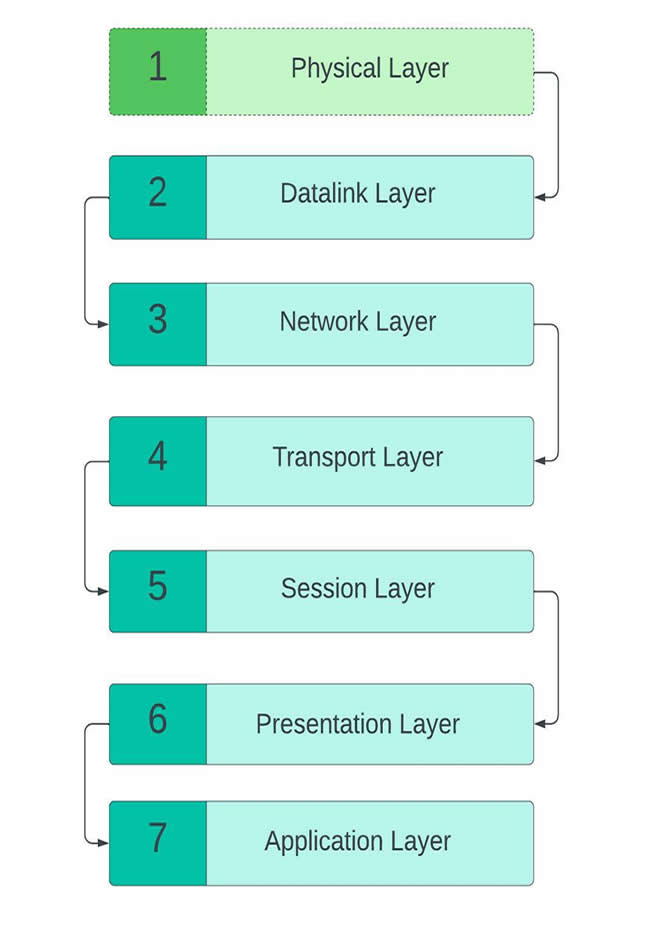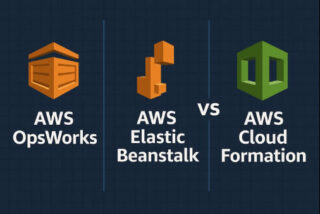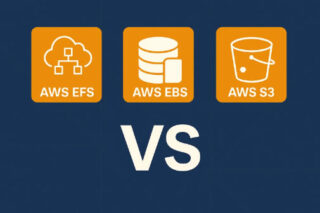The OSI Model (Open Systems Interconnection Model) is a conceptual framework for describing the networking system’s functions. It was the first industry-standard paradigm for network communications, adopted in the early 1980s by all major computer and telecommunications corporations.
The present Internet is not built on the OSI paradigm, but rather on the more straightforward TCP/IP model. The OSI seven-layer model, on the other hand, is still extensively used because it aids in visualising and communicating how networks operate, as well as in isolating and troubleshooting networking problems.
Does OSI Model really matter?
The OSI Model is still very useful for debugging network problems, even if the modern Internet doesn’t fully follow it (it implements the simpler Internet protocol suite instead). This model can help decipher issues such as a single person being unable to access the internet, or a website being unavailable for thousands of people. A lot of extra labour can be avoided by narrowing the problem to one specific layer of the model.
How data flows through the OSI model?
Humans move information from network to network. In actuality, it crosses seven OSI layers in both sending and receiving devices. The application layer chooses a protocol and sends it to the presentation layer. Compress it and pass it to the session layer for communication setup.
The data is segmented and sent to the network layer for packet breaking. The data connection layer frames it and sends it to the physical layer. A bitstream of 1s and 0s is sent to the physical layer of the receiving device. The process repeats until the recipient opens the email.
Physical Layer
The OSI Model’s lowest layer is concerned with electronically or optically passing raw unstructured data bits over the network from the sending device’s physical layer to the receiving device’s physical layer.
The principal Physical Layer functions are:
The Physical Layer is in charge for transmitting raw data over the physical medium in the form of electrical signals, light waves, or radio waves.
It is responsible for selecting the proper type of cabling, such as copper wire or fibre optic cable, based on the required distance and data rate for the connection.
The Physical Layer defines the type of signal that will be used to transmit data, such as the voltage levels for electrical signals or the frequency of radio waves.
Data Link Layer
These are the primary functions of the Data Link Layer:
- The Data Link Layer divides the information received from the Network Layer into smaller units known as frames. Each frame has a header and a trailer that hold control information like the source and destination addresses.
- Error detection and correction: The Data Link Layer uses checksums and cyclic redundancy checks (CRC) to detect data transmission errors. If an error is detected, it may be possible to correct it using techniques such as re-transmission or error correction codes.
- Flow control: The Data Link Layer employs flow control techniques to ensure that the sending device does not transmit data faster than the receiving device can process it. This aids in preventing data loss and ensuring transmission efficiency.
- The Data Link Layer controls access to the physical medium, such as a copper wire or radio frequency. It may employ techniques such as carrier sense multiple access (CSMA) or token passing to prevent devices from simultaneously transmitting data.
It is a crucial component of the OSI Model because it ensures the transmission of data between devices on the same network segment. It is essential for networks to work well and plays a very important role in networking.
Network Layer
The principal Network Layer functions are:
- The Network Layer determines the most efficient path for data to travel between its source and destination. It employs routing protocols such as OSPF (Open Shortest Path First) and BGP (Border Gateway Protocol) to exchange routing information with other network devices.
- Addressing: The Network Layer is responsible for assigning unique IP (Internet Protocol) addresses to devices on the network. These addresses are used to identify devices and direct data to their intended destination.
- The Network Layer may fragment large data packets into smaller units called datagrams for transmission over the network. It is also responsible for reassembling these datagrams at the destination into the original packet.
- Quality of service (QoS): The Network Layer may provide mechanisms to prioritise certain types of traffic, such as real-time video or voice, over other types of traffic. This is known as service quality (QoS).
The Network Layer is an important part of the OSI Model because it is responsible for routing data between devices on different network segments.
Transport Layer
The transport layer is in charge of data packet delivery and error checking. It is responsible for controlling the size, sequencing, and ultimately the transport of data between systems and hosts. TCP, or Transmission Control Protocol, is a well-known example of the transport layer.
The principal Transport Layer functions are:
- Transport Layer is responsible for establishing, maintaining, and terminating connections between devices for end-to-end communication. It enables devices to communicate in a manner that is invisible to the layers above it.
- Segmentation and reassembly: The Transport Layer is responsible for dividing large data blocks into smaller segments for transmission across the network. Additionally, it is responsible for reassembling these segments into the original data at the destination.
- Flow control: The Transport Layer employs flow control techniques, such as resampling, to ensure that the sending device does not transmit data faster than the receiving device can process it. This aids in preventing data loss and ensuring transmission efficiency.
Error recovery: The Transport Layer employs retransmission and error correction codes to recover from transmission errors.
Session Layer
The session layer manages communications between machines. At layer 5, a session or connection between machines is established, managed, and terminated.
A session is a logical communication channel between two devices in the OSI model. The session layer is in charge of establishing, managing, and terminating these communication sessions. It ensures that the data is transmitted between the two devices reliably and that any errors that occur are rectified.
It also facilitates the synchronisation of data between the two devices and permits them to recover from any data loss or communication errors. It is a crucial layer that enables reliable and efficient communication between devices.
Presentation Layer
The presentation layer transforms or converts data for the application layer according to the application’s syntax or semantics. As a result, it is also referred to as the syntactic layer. Additionally, this layer is capable of handling the encryption and decryption operations necessary by the application layer.
The presentation layer serves as the interface between the application layer and the network, allowing applications to communicate regardless of the underlying data formats or protocols. It is a key layer that enables standard and flexible communication between different apps and systems.
Application Layer
Both the end user and the application layer communicate directly with the software application at this tier. This layer is responsible for the provisioning of network services to end-user apps such as a web browser or Office 365. The application layer is responsible for determining communication partners, resource availability, and communication synchronisation.
Application layer protocols comprise HTTP as well as SMTP (Simple Mail Transfer Protocol is one of the protocols that facilitates email communications) (Simple Mail Transfer Protocol is one of the protocols that enables email communications).
The OSI Model is a useful tool for understanding how communication occurs between devices on a network and for troubleshooting problems that may occur.



